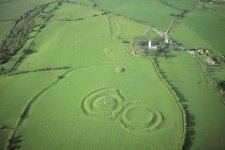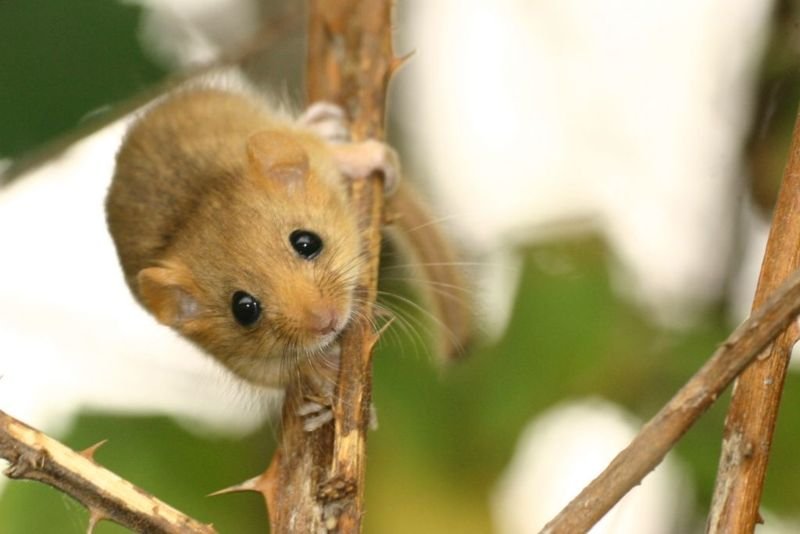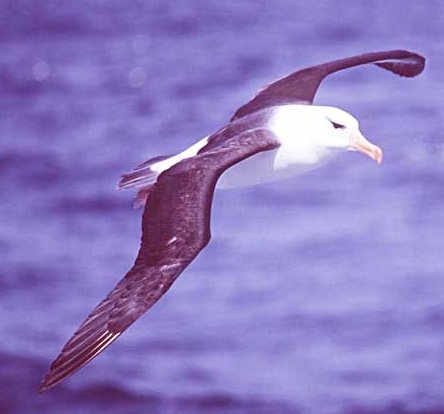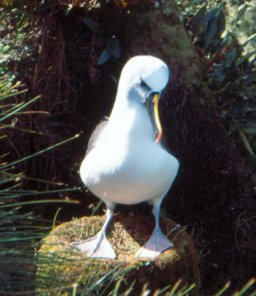TRANSLATIONS
The parallel sequences of 8
glyphs represent the course of the sun over the year, I
believe, and the two breaks then should be at summer
solstice (after 4 'uplifting' glyphs) and in the middle
of the 2nd half of the year (6 / 8 * 12 = 9 months).
Disregarding
nights when the moon is competely dark (new moon) there
will be 4 weeks in each month. 9 * 4 = 36 weeks - a
number suitable for a full circle, implying that the
days of the sun are structurally the same as the weeks
of the moon.
9 months (each counted as
28 moonlit nights) do not reach as far as until
September 1st:
"On August
13th, the pre-Christian feast of the Mother Goddess
Diana, or Vesta, was once celebrated with cyder, a
roasted kid spitted on hazel-twigs and apples hanging in
clusters from a bough.
Another name
of this goddess was Nemesis (from the Greek nemos,
grove) which in Classical Greek connotes divine
vengeance for breaches of taboo. In her statues she
carries an apple-bough in one hand, and the
fifth-century Christian poet Commodianus identifies her
with Diana Nemorensis ('of the grove') whose followers
'worship a cut branch and call a log Diana' ...
Nemesis
carries a wheel in her other hand to show that she is
the goddess of the turning year, like Egyptian Isis and
Latin Fortuna, but this has generally understood as
meaning that the wheel will one day come full circle and
vengeance be exacted on the sinner." (The White Goddess)
We certainly are on the
right track. Vengeance will be 'exacted' by 'Mafdet'
at the proper time, probably after 9 * 28 = 252 nights.
Mother Nature is symbolized by a log, just as henua
is illustrated in GD37.
|
9 Hazel
August 5th - September 1st
"The ninth tree is the hazel, in the
nutting season. The nut in Celtic legend is
always an emblem of concentrated wisdom:
something sweet, compact and sustaining
enclosed in a small hard shell - as we say
'this is the matter in a nut-shell'. The
Rennes Dinnshenchas, an important
early Irish topograhical treatise, describes
a beautiful fountain called Connla's Well,
near Tipperary, over which hung the nine
hazels of poetic art which produced flowers
and fruit (i.e. beauty and wisdom)
simultaneously. As the nuts dropped into the
well they fed the salmon swimming in it, and
whatever number of nuts any of them
swallowed, so many bright spots appeared on
its body ...
In England a forked hazel-stick was used
until the seventeenth century for divining
not only buried treasure and hidden water,
as now, but guilty persons in cases of
murder and theft ... The letter Coll
[hazel] was used as the Bardic numeral nine
- because nine is the number sacred to the
Muses and because the hazel fruits after
nine years. The hazel was the Bile Ratha,
'the venerated tree of the rath' ...

(picture from Wikipedia - The Ráth at Tara
Hill)
In the Fenian legend of the Ancient Dripping
Hazel, the hazel appears as a tree of wisdom
that can be put to destructive uses. It
dripped a poisonous milk, had no leaves and
was the abode of vultures and ravens, birds
of divination. It split in two when the head
of the God Balor was placed in its fork
after his death, and when Fionn used its
wood as a shield in battle its noxious
vapours killed thousands of the enemy ..."
(The White Goddess) |

"Hazel dormice are the only
small mammals in Britain to
have a completely furry
tail. They have golden-brown
fur and large black eyes.
They are nocturnal creatures
and spend most of their
waking hours high among the
branches of trees looking
for food. They will make
long detours through the
treetops rather than come
down to the ground and
expose themselves to danger.
In winter, dormice hibernate
in nests beneath the leaf
litter on the forest floor.
When they wake up in spring,
they build woven nests of
honeysuckle bark and fresh
leaves in the undergrowth.
If the weather is cold and
wet, and food scarce, they
save energy by going into
torpor; they curl up into a
ball and go to sleep.
Dormice, therefore, spend a
large proportion of their
lives sleeping; either
hibernating in winter or in
torpor in summer."
(Wikipedia)
|
The notion that the year in
reality does not stretch over 12 months but only 9, agrees
with what we can read in the rongorongo texts.
 |
 |
 |
 |
|
e moa te herehua |
ka hora ka tetea |
ihe kuukuu ma te maro |
ki te henua |
|
Aa1-9 |
Aa1-10 |
Aa1-11 |
Aa1-12 |
 |
 |
 |
 |
 |
 |
 |
 |
 |
 |
 |
 |
The
expression ihe kuukuu ma te maro, what may
that mean? Neither Vanaga nor Churchill has
kuukuu, but I did find kuku:
| Kuku
To swathe, to swaddle:
he-kuku i te tôa, to swathe the
sugarcanes (with their large leaves, so they
grow better and taller). Vanaga.
1. To tie up sugar canes.
2. To coo, a pigeon. P Mgv.: kuku,
name of a land bird. Mq.: kuku,
kukupa, uururu, a large pigeon.
Ta.: uupa, uurairao, pigeon.
Churchill. |
If Metoro meant 'swaddle' (in Aa1-11), then he probably commented upon
the shape of ihe in which the 'waist' is more
lean than usually seen.
His
kuukuu is not referring to the right part of the
glyph, that is clear from his ma te maro.
| Ma
(Prep.) for (found in some cases instead of mo). Vanaga.
1. And, with, in addition. P Pau.: ma, together
with. Mgv.: ma, for, with. Mq.: ma, and. Ta.: ma,
and, with. (... we may say of ma that it points to the non-ego
and not-here and links it to the central concept of that which is active
and present ... we should hold the consonantal value as carrying the
linking, conjunctive, associative sense; the shade of variety in meaning
would be found to exist as the nucleus of the e and of the o
respectively - Churchill 2) 2. Shame; hakama, shame,
confusion, timid, to blush, bashfulness. P Pau.: mataki, shame.
Mgv.: akama, shame, bashfulness, modesty, shy. Mq.: maamaa,
ninny, simpleton. Ta.: haama, timidity, shameful, confused.
Churchill. |
| Mo
For (prep.): mo te aha, what for? (also: mo he);
moira, because of this; mo aha-mai-á, ana oho au, what use
is it to me, if I go? Vanaga.
1. For (moo); ika ke avai mo, abuse (bad
treatment too great for); riva mo tere, navigable (fit for
voyaging); pu moo naa, hiding-place (hole for hiding); koona
moo tomo, port (place for entering); moo iharaa, ordinary;
moo te oone, shovel (for the sand). PS Mgv.: mo, for. Sa.,
To., Fu., Niuē, Ma., Aniwa: mo,
id. 2. In order that (moo);
mo okorua, to accompany, to
adjoin (in order to be two-together); moo arai,
to join (in order to be together). 3. A negative value (moo);
moo aneira, inopportune.
Churchill. |
The
Marquesan uururu reminds me of e ia toa
tauuruuru raaraa (at midnight in Aa1-42--43):
Which
leads us to the birds on Easter Island. Barthel
listed 16 bird names, one of which (red below) may
be relevant:
|
1 |
manu tara |
9 |
tavake |
|
2 |
pi riuriu |
10 |
ruru |
|
3 |
kava eoeo |
11 |
taiko |
|
4 |
te verovero |
12 |
kumara |
|
5 |
ka araara |
13 |
kiakia |
|
6 |
kukuru toua |
14 |
tuvi |
|
7 |
makohe |
15 |
tuao |
|
8 |
kena |
16 |
tavi |
Interestingly the bird immediatly
before has a name (ka araara - onomatopoetic
according to Barthel) which is similar to Metoro's
raaraa.)
Kukuru toua is not
the label for a developmental stage of manu tara.
It is a separate species, but which?
"The sea
bird [not a land bird as the Mangarevan kuku]
named kukuru toua, which follows the sooty tern
sequence, has not been identified so far (Fuentes
1960:239). The addition toua indicates the color
of the egg yolk, while the first word seems to indicate
the Polynesian word for pigeon (MQS. kuku; MAO.:,
RAR., TUA., kukupa; TAH. 'u'upa; MGV.
kukuororangi; TON.: kulukulu).
| Toûa Egg
yolk; the colour yellow; soft, fibrous part of tree bark; toûa
mahute, mahute fibres. Vanaga. |
In a
recitation, the following is said about this bird:
| ka riti the hupee |
How it flows from the
nose when he cries |
| (paringi te matavai) |
(y derrama làgrimas) |
| o te kukuru toua |
of the yellow Kukuru |
| eve pepepepe |
with the very short tail. |
| (Barthel
1960:854; addition by Campbell 1971:404) |
The
Metoro chants contains two additional fragments:
| kua hupe ma te maitaki |
| kua rere te manu vae
oho |
| ku pepepepe te manu
kukurutou |
| ... |
| eaha te huri |
| o te manu kukurutou |
| ko te manu eve
pepepepe |
| (Barthel 1958: 177, 188) |
While the
spelling of the name is slightly different, in this
instance too, the very short tail (eve pepepepe)
is mentioned. The bird in question might conceivably be
Diomedea melanophrys, and albatross with black
lids, or even Diomedea chlororhynchos, the
yellow-beaked albatross. In this case, kukuru toua
would describe the peculiar shape of the beak (compare
the 'tubular noses' of petrels) and its yellow color,
while eve pepepepe seems to refer to the
relatively short tail of the powerful bird.
If this
identification is correct, then the albatross is ranked
after the sooty tern, who is the object of a cult, but
ahead of the frigate bird; and because of his size, the
albatross precedes the following enumeration of sea
birds." (Barthel 2)

Black-browed albatross
(Diomedea melanophris or Thalassarche
melanophris)

Yellow-nosed albatross
(Diomedea chlororhynchos or
Thalassarche chlororhynchos)
Pictures from Wikipedia
|









